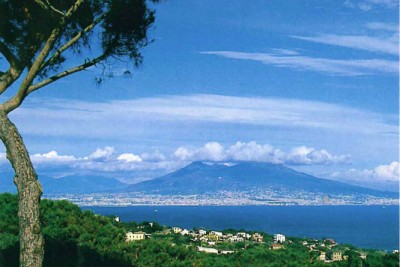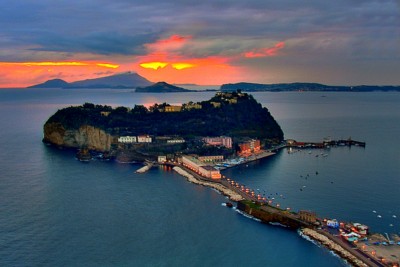Ancient Cuma Was the First Greek Colony in Italy
It was here that the Sibyl gave the prophecy to Aeneas, the Trojan hero, son of the prince Anchises and ancestor of Romulus and Remus.



Relatively little is known about ancient Cuma, the first Greek western colony founded in the second half of the 8th century B.C., apart from what can be learned from the Greek vases removed from its necropolises in the 19th century.
In the 20th century excavations centered mainly on the Acropolis, where it is possible to visit two large Greek temples, which were converted into churches in the Middle Ages.

On the lower terrace stands the temple of Apollo, modified by the Romans in the Augustan Age.
A seat monument and a cistern still survive, the latter perhaps linked to a monumental fountain of the Hellenistic period. At the top of the Acropolis stands the second temple, known as the Temple of Jupiter.

The Acropolis is also home to the so-called ‘Cave of the Sibyl’, the most famous monument in Cuma.
According to Virgil, it was here that the Sibyl had given the prophecy to Aeneas, the Trojan hero, son of the prince Anchises and the goddess Aphroditis, that in Roman mythology is considered the ancestor of Romulus and Remus.
The Sibylline Books, containing the prophecies that the highest magistrates of the Roman state would consult in the most difficult days of the Republic, are said to have come from Cuma, and the priestesses of the cult of Demeter/Ceres, who followed ancient rituals, were also said to have come from here.
The Cave of the Sibyl is a long tunnel dug into the rock, which runs straight until it reaches a space that acts as a vestibule to a room with three niches.
The tunnel, cut through at intervals by light penetrating from the side apertures, is so evocative that it is easy to understand why in late antiquity the oracle and the priestess of Apollo were located here. In fact, the structure was probably a corridor built for defensive purposes.
The other tunnel, known as the Crypta Romana or ‘Cave of Cocceius’, which in the late-Republican Age linked the port of Cuma to the port of Puteoli on the lakes of Averno and Lucrino, can be accessed from the square in front of the ‘Cave of the Sibyl’, from where you can also take Via Sacra to get to the Acropolis.
The ruins of the ‘lower city’ can also be seen from the Acropolis, and include the Italic Temples in the Forum and the mighty ruins of a thermal baths building known as the Masseria del Gigante (‘Giant’s Homestead’), an amphitheater recently brought back to light, as well as the ‘Arco Felice’, the archway built over the pass dug into Monte Grillo, the eastern border of the ancient city, to allow for the passage of the old Via Domitiana.
Parco Archeologico di Cuma
Pozzuoli (NA) Via Monte di Cuma, 3
Open 9.00 AM - 2.30 PM (last admission one hour before)
Closed on Tuesday
Tel: 848 800288 from land lines in Italy or (+39) 06 39967050 from cell phones and abroad
Tickets: € 4.00
Visitors between 18 and 25: € 2.00
With Artecard: € 2.00
EU citizens under 18 and over 65: free


